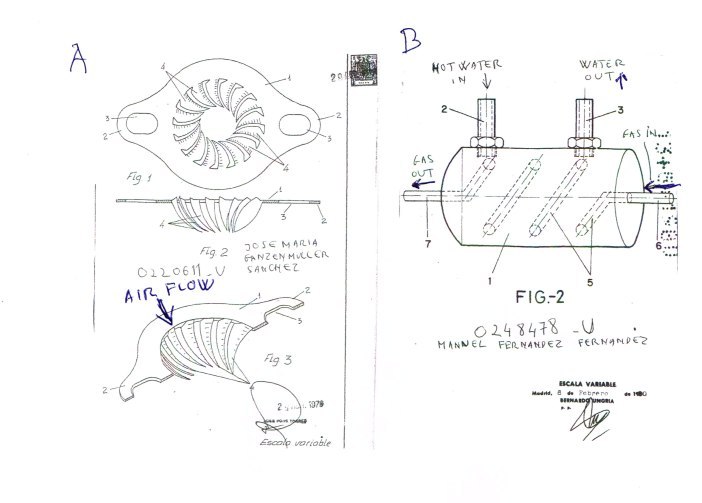| Author |
 Topic Topic  |
|
Aaron Cake
Administrator
    
Canada
6718 Posts |
 Posted - Nov 05 2011 : 10:14:44 AM Posted - Nov 05 2011 : 10:14:44 AM





|
I believe you are referring to the RX-8. They ended the model and said that the last remaining units (about 1000) are the last ones. Once gone, no more RX-8.
Mazda continues to develop the rotary, now working on their Skyactiv rotary. |
 |
|
|
urquiola
Apprentice
  
Spain
97 Posts |
 Posted - Nov 10 2011 : 08:44:36 AM Posted - Nov 10 2011 : 08:44:36 AM


|
| It seems Mazda discontinued sales of RX-8 in Europe, as the regulatory authorities there thought the car didn't comply with the anti-pollution rules, it just emmited too much CO2 for their taste; I don't know if this can change in the future. Somebody has implemented the reed-valve controlled peripheral intake port ? It will be good knowing the results, as I pointed early, I have no mechanical expertise nor a repair shop where this can be tested. Salut + |
Edited by - urquiola on Jan 01 2013 4:06:22 PM |
 |
|
|
urquiola
Apprentice
  
Spain
97 Posts |
 Posted - Mar 24 2012 : 5:38:58 PM Posted - Mar 24 2012 : 5:38:58 PM


|
| Hi !: regarding the concept of a double use intake-exhaust single port for Wankel Rotary Engines, I've found a SAE paper: 920779, by D W Blundell and M H Sandford, about the Lotus research in Two Stroke Engines, that depicts a practical rotary valve approach to the concept of a single port used for stratified charging of engines, that may be considered for use in controlling a port acting in both intake and exhaust; such a rotary-valved single-port arrangement may probably be good for city and low r.p.m. use of rotaries. Sorry, I can't draw an image of it, and the paper is copyrighted. Enjoy it for 23 $ or so from www.sae.org . Salut + |
Edited by - urquiola on Mar 24 2012 10:15:13 PM |
 |
|
|
jakevettori
New Member
USA
2 Posts |
 Posted - Apr 03 2012 : 9:12:19 PM Posted - Apr 03 2012 : 9:12:19 PM


|
"It seems Mazda discontinued sales of RX-8 in Europe, as the regulatory authorities there thought the car didn't comply with the anti-pollution rules, it just emmited too much CO2 for them; I don't know if this can change in the future. Somebody has implemented the reed-valve controlled peripheral intake port ?. It will be good knowing the results, as I pointed early, I have no mechanical expertise nor a repair shop where this can be tested. Salut +"
i agree....
|
jake f vettori |
 |
|
|
Aaron Cake
Administrator
    
Canada
6718 Posts |
 Posted - Apr 07 2012 : 10:20:02 AM Posted - Apr 07 2012 : 10:20:02 AM





|
It's getting harder and harder for Mazda to keep building rotarys that are competitive with piston engines for fuel economy at the same power level. In the past it was easier, because piston engines just weren't making the kind of power they are now for their displacement. But with continuously variable valve timing, direct injection and all the other improvements, we have 2.4 litre piston engines making 200+ horsepower while still getting 35MPG city, 40MPG highway. Mazda can't compete in this market even though they are making more power with less displacement, no one cares because you're stuck at 18 - 25 MPG in the city.
It's really too bad. While very mechanically efficient, the rotary isn't thermally efficient. Just a nature of the shape of combustion. Now Mazda says the new Skyactiv 16X makes huge improvements, but until anyone sees it, it's all just hot air.
The application of the rotary is the high revving sports car, where lightness and power are important while fuel economy isn't so much. The problem is, there doesn't seem to be much of a market for the traditional sports car in North America. |
 |
|
|
urquiola
Apprentice
  
Spain
97 Posts |
 Posted - Apr 07 2012 : 4:18:30 PM Posted - Apr 07 2012 : 4:18:30 PM


|
| I discussed this before, but David W Garside, the engineer that developed the Norton Wankel rotary engine line, line that gave origin to the Mid-West aeroengines and Diamond Engines aircraft rotary engines, claimed having fully solved the problem of elasticity in the Wankel engine, being able to design engines that either gave all its power at low r.p.m., or when raced as the usual rotaries. When he discontinued his work on Wankel engines because, some say this, Lonrho moved the money assigned to the Norton projects to other different businesses, D W Garside said he would have preferred as end of job compensation all data from his work on Wankel engines done at Norton, instead of money. Don't know if he can be contacted to comment more on this, may be thru SAE. The Garside's work is from the 70's, he may be retired long ago. Salut + |
Edited by - urquiola on Jan 01 2013 4:08:17 PM |
 |
|
|
Aaron Cake
Administrator
    
Canada
6718 Posts |
 Posted - Apr 08 2012 : 10:25:08 AM Posted - Apr 08 2012 : 10:25:08 AM





|
| I'll see how if I can find the SAE paper. It might be on the rotary aviation site, which I can't remember the address or real name for at the moment. |
 |
|
|
urquiola
Apprentice
  
Spain
97 Posts |
 Posted - Apr 08 2012 : 1:12:38 PM Posted - Apr 08 2012 : 1:12:38 PM


|
| Hi Aaron!: thank you for your continued attention. The SAE paper by D W Garside describes his early work in Norton rotaries, but his comments about elasticity are from a later publication telling about an interview with him, not from a SAE paper, as far as I remember. SAE papers as you know can be bought and downloaded or ordered to be received by mail from www.sae.org . An spanish top Wankel expert is the one who told me about Lonrho decapitalizing Norton and its rotary engines line to invest the money elsewhere. I can give you his address in a private way if you wish, you have my e-mail address. Regards, salut + |
 |
|
|
lustermage
New Member
4 Posts |
 Posted - Apr 08 2012 : 7:33:47 PM Posted - Apr 08 2012 : 7:33:47 PM


|
So its ok mazda stopped making rotary engines cuz fuel economy, but they dont say anything when new dodge viper launched with 8.4L!.
are they ... kiddin me. How hipocrite and biased they are. |
 |
|
|
Aaron Cake
Administrator
    
Canada
6718 Posts |
 Posted - Apr 14 2012 : 10:43:16 AM Posted - Apr 14 2012 : 10:43:16 AM





|
| However, the Viper likely meets all North American emissions standards. It's getting harder for Mazda to overcome the combustion shape of the rotary to meet emissions. In the same sense, people expect an 8.4 litre engine to get 10 MPG, but they do not expect a 1.3 litre engine to get 20 MPG. |
 |
|
|
urquiola
Apprentice
  
Spain
97 Posts |
 Posted - May 15 2012 : 10:51:13 PM Posted - May 15 2012 : 10:51:13 PM


|
| Hi !: coming back to the subject of intake-exhaust overlap, that I keep on thinking it's of very low amount and with no importance in the proposed reed-valve controlled peripheral intake side exhaust Wankel engine, and also to the related subject of Exhaust Gas Recirculation, SAE paper 865033 by S. Velnovic in Kragujevac, et al. reported having obtained a 10% better fuel economy and reduced exhaust toxicity by introducing exhausts into carburettor emision pipe, and there are several patents on devices that were actually put in the market, that allow heating the gasoline by making it circulate thru a tube surrounded by a sleeve where hot engine cooling fluid circulates counterwise the fuel flow direction. This is feasible as long as care is taken not to reach the range of gasoline temperatures where vapor lock begins being a problem, and is an approach that was implemented with success in a jet training airplane built in Poland long time ago, the Iskra. |
 |
|
|
Aaron Cake
Administrator
    
Canada
6718 Posts |
 Posted - May 19 2012 : 10:45:54 AM Posted - May 19 2012 : 10:45:54 AM





|
"Hot vapor" systems were popular in the 70s/80s for a while. Manufacturers experimented with them but found fuel injection to be far less complicated and more effective.
|
 |
|
|
urquiola
Apprentice
  
Spain
97 Posts |
 Posted - May 25 2012 : 3:37:20 PM Posted - May 25 2012 : 3:37:20 PM


|
| Hi!: I don't know the meaning of the expression "Hot vapor systems", and it reminds me the "Vapor lock"; the reference posted was just about a little bit of heating the gasoline immediatly before the formation of the air-fuel mix, fuel heating done by making gasoline circulate thru a tube surrounded by a flow of hot water coming from the engine cooling system, I don't know if we speak about the same thing. In automotive ENGINEERING international, May 16, 2012 issue, a note appears on the Ford's (A long time partner of Mazda, they also conducted research on RCEs) ecoBoost engines that get a 15% fuel economy improvement by using cooled EGR. Intake-exhaust overlap and Exhaust Gas Recirculation may not necessarily be bad!. Salut + |
Edited by - urquiola on Jan 01 2013 4:11:50 PM |
 |
|
|
Aaron Cake
Administrator
    
Canada
6718 Posts |
 Posted - May 27 2012 : 10:48:07 AM Posted - May 27 2012 : 10:48:07 AM





|
Yes, that's what in North America they referred to as "hot vapor". Several famous people were involved in manufacture of these systems (including Carrol Shelby) but they all relied on antiquated carburetors and complicated heating systems. Fuel injection was much simpler, more reliable, and ultimately obviously the choice. Up until a few years ago I still saw adds for "hot vapor" conversions.
Cooled EGR is becoming very common. I believe the Prius was the first well known car to use cooled EGR. My Insight relies heavily on precisely controlled EGR to maintain lean burn. The only problem with this is that there is an EGR plate between the intake manifold and head that tends to clog up as the EGR cools on the way through. Mine is due for another cleaning. |
 |
|
|
urquiola
Apprentice
  
Spain
97 Posts |
 Posted - Jun 28 2012 : 3:33:38 PM Posted - Jun 28 2012 : 3:33:38 PM


|
Hi!: this is the sketch for the two fuel economizers described in the text, A is to induce swirl in the incoming air or mix entering the intake manifold, to improve homogeneity of mix and obtain a better combustion, and B is to heat fuel before entering the carburettor or the injection system, if the injection system doesn't have already something like this incorporated, as hotter fuel is better vaporized, obtaining a more complete combustion, and reducing exhaust emissions. Fuel injection was then very complex and very expensive, only luxury cars installed it, but as a result of the demand on fuel economy and emissions improvements, today even cheap cars mount EFI. The economizers in the images below are really oldies in the field of patented gadgets!
Download Attachment:  Fuel economizers.jpg Fuel economizers.jpg
49.82 KB
 |
Edited by - urquiola on Jan 01 2013 4:28:40 PM |
 |
|
 Topic Topic  |
|

